Wednesday, January 29, 2014
DIY Raw Banana + Almond Butter Ice Cream! Healthy Healthy
Ingredients:
- Frozen bananas
- Raw almonds
In a food processor, blend almonds into creamy, smooth texture (this is how you make any DIY nut butter). Next, remove your nut butter (but leave some in the machine) and then add in your frozen banana. Pulse! Blend the banana until creamy and smooth. Last, add in a little extra nut butter (if it needs it) as well as any other fun ingredients (eg strawberries or dark chocolate) - and blend. Very simple basic recipe that can be modified per your personal dietary preferences.
- Frozen bananas
- Raw almonds
In a food processor, blend almonds into creamy, smooth texture (this is how you make any DIY nut butter). Next, remove your nut butter (but leave some in the machine) and then add in your frozen banana. Pulse! Blend the banana until creamy and smooth. Last, add in a little extra nut butter (if it needs it) as well as any other fun ingredients (eg strawberries or dark chocolate) - and blend. Very simple basic recipe that can be modified per your personal dietary preferences.
Tuesday, January 28, 2014
How to Lose Belly Fat Fast and Get a Flat Stomach: Free Ecourse teaches you How to Lose Stomach Fat
7 Steps to Losing Belly Fat Forever
Hello, my name is Charles Inniss, and I am a Personal Trainer and Physical Therapist that likes to help people get in shape.
This free ecourse is inspired by the key lessons from my ebook Personal Training Secrets to Lose Belly Fat and Get a Flat Stomach.
I have worked with hundreds of women over the past 8 years, and the #1 fitness goal is always to lose belly fat and get a flat stomach.
This free ecourse will help you to set up a plan of attack so that you can reach your goals.
The first lesson discusses the importance of taking measurements and setting goals. Without goals it's really hard to achieve anything. This lesson will start you off on the right foot.
The second lesson will reveal the #1 Nutrition Rule for Getting a Flat Stomach. Your eating habits are just as important as your exercise routine. If you follow the #1 Nutrition Rule, you'll lose belly fat fast.
The third lesson talks about why good abdominal exercises are not always enough to help you improve the look of your mid-section. This is the biggest myth in fitness, but once you understand it you won't be a slave to crunches.
The fourth lesson will teach you how to reduce belly fat through weight training. Many women worry that weight training will make them bulky, but this is far from the truth. This lesson will explain why it's important to include strength training in your workout if you want to get a flat stomach.
The fifth lesson talks about how to lose belly fat with cardio and aerobic exercise. If you want to lose stomach fat, you have to burn calories, and this lesson will show you how.
The sixth lesson is a secret flat stomach exercise tip. It talks about the most neglected part of fitness that helps to get a flat stomach.
And, the seventh lesson talks about putting the fuel on the fat burning fire. This lesson also recaps the secrets to a flat stomach and the lessons on how to lose belly fat.
Weight Lifting Exercises are Important for Speeding up Your Metabolism and Building Overall Strength
Core training is more than just working your abdominals and lower back muscles directly. You can actually do many different things to increase the challenge to your core muscles while you are lifting weights.
This page will teach you a simple upper body core training progression so that you can work your core muscles while you're working your arm muscles.
When you are using upper body machines, your core muscles generally don't work as hard as when you use free weights (dumbbells) or cables. Machines tend to provide lots of external stability, so your muscles do not have to provide extra core stability.
The core training progression works best with dumbbell exercises for the arms and cable exercises for the arms. Below is a description of the progression.
Upper Body Core Training Progression
There are 4 steps in the upper body core training progression.
The progression is:
Level 1- 2 Arms Simultaneously
Level 2- Alternating Arms
Level 3- 1 Arm at a Time, and
Level 4- 1 Arm with a Rotational Movement.
Level 1- 2 Arms Simultaneously
Level 2- Alternating Arms
Level 3- 1 Arm at a Time, and
Level 4- 1 Arm with a Rotational Movement.
When you use both arms at the same time you are relatively balanced, but dumbbells or cables will challenge your core and stabilizer muscles more so than an arm machine. Using both arms at the same time is the first level and easiest on the core.
The second level is to perform an upper body exercise but in an alternating fashion. When you alternate arms, you add a rotational stress to your body and your core muscles and stabilizer muscles must work harder to keep your body stable.
The third level is to only use 1 arm at a time. When you have 2 dumbbells in your hands, one weight acts as a counter balance to the other weight. But when you only have one dumbbell or cable handle in your hand, the resistance will tend to pull your body into a rotational movement. When you only use 1 arm at a time you core muscles must work really hard to counteract the rotational force of the resistance.
The most challenging core progression is to use one arm at a time, but at the end of the motion you should add a slight rotational movement from the spine. By adding a rotational movement, the core muscles must work throughout the exercise to both stabilize your spine and move your spine.
Sample Exercise: Standing Cable Chest Press
A sample exercise that you could do this core exercise progression for is the standing cable chest press. By standing you'll work on balance and core stability and the cables will add a stability challenge to the shoulders.
First, try the standing cable chest press with both arms at the same time, then progress to alternating arms, then progress to 1 arm, and lastly progress to 1 arm with a rotational movement.
Dumbbell Exercises for the Abs Challenging Ab Exercises
Dumbbell exercises are an excellent way to increase the intensity of your ab workouts.
When regular crunches and other ab exercises become too easy, you need to find a way to challenge your muscles, and adding resistance to your abdominals is one way to further increase strength and break through plateaus.
You can add resistance to your upper body by using dumbbells, and you can add resistance to your lower body by adding ankle weights.
Dumbbells are a must have for any home gym, and a little goes a long way. 2, 3, and 5 pound dumbbells can add a significant challenge to your abs if you have not used any resistance in your latest routines. And of course, as you get stronger you can use heavier dumbbells.
Here's a few of my favorite dumbbell exercises for the abs.
Standing Dumbbell Side Bends for the Obliques
Starting Position: Stand with your feet together and a dumbbell in one hand. Place your opposite hand behind your head.
Form: Using your side ab muscles, lower the dumbbell towards the floor until you fell a comfortable stretch in the side opposite of the dumbbell. Hold for 1 second and then slowly return to the starting position.
Personal Trainer Tips: You should feel the muscles working on the side opposite of the hand that is holding on to the dumbbell. Keep your body in a straight line and lean straight over to the side.
Here are some additional oblique exercises.
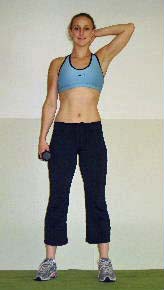
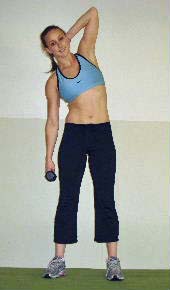
Stability Ball Exercises, Exercise Ball Exercises, and Swiss Ball Exercises for the Abdominals
Stability Ball Core Exercises
1 Leg Roll-Ins
Starting Position: Begin by placing your feet on a ball and your hands on the floor. Once you feel centered and balanced, lift one leg off the stability ball.
Form: While keeping your abdominals engaged and your back stable, bring your knee in towards your chest and roll the ball forward.
Hold just for a brief second and then straighten your knee and roll the ball back to the starting position.
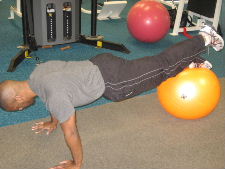
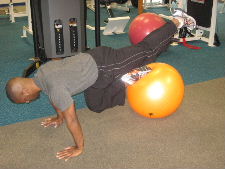
Personal Trainer Tips: During this exercise, the ball will have the tendency to move side to side, so you will have to use your core muscles to keep the ball stable. It is really important to engage your abdominals so that your back stays stable. If you feel your lower back arching excessively, pull in your abs, rest, or try the easier version of this exercise.
Aim for 10-15 on each leg.
1 Leg Piques
Starting Position: Begin by placing your feet on a ball and your hands on the floor. Once you feel centered and balanced, lift one leg off the stability ball.
Form: While keeping your core engaged. Roll the ball towards your chest until you reach the pique position. Hold for a brief second and then slowly return to the starting position.

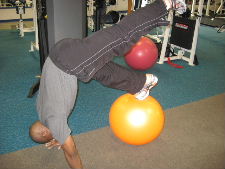
Personal Trainer Tips: Try to get your hips pointing straight up to the ceiling, and as you return to the starting position make sure that you keep your abs engaged so that your back doesn't arch excessively.
Perform 10-15 reps on each side.
Benefit of Exercising with Medicine Ball
When doing abdominal exercises on the ball�
#1 Your abs work harder.
#2 There is more Range of Motion.
#3 There are greater improvements in your balance,
coordination, and stability.
#1 Your abs work harder.
#2 There is more Range of Motion.
#3 There are greater improvements in your balance,
coordination, and stability.
It�s already been demonstrated through scientific research that the ab and stomach muscles work harder during a crunch if the you are lying on an exercise ball or another surface that is less stable than the floor, and in addition to the stability challenge doing crunches on the exercise ball increases the range of motion of the exercise which also has added benefits.
Also, many people find that crunches on the exercise ball are more comfortable than other crunch positions, and this can help you to get through a tough workout. So, getting on the ball could be just the boost that your abdominal workouts need.
Benefits of the Exercise Ball
There are two main differences between crunches on the floor and crunches on an exercise ball.
First, there is an added balance challenge when you do crunches on a stability ball. Your ab, lower back and core muscles work to keep your spine stable. When you crunch on a stability ball, the ball will slightly move underneath you and your core muscles will work harder to help you maintain your balance.
It may seem intimidating but it�s really not that hard to master, and it has so many benefits. Begin just by sitting on the ball, and you�ll know that it won�t fly from under you and leave you on the floor. If you are concerned about falling off, position yourself near something that is stable like a sofa or a wall and use your hand to help guide you into the correct position.
The Second main difference between crunches on the floor and crunches on the ball is that the position of your hips, pelvis, and spine changes. With crunches on the floor, your thighs are really close to your chest, so you can only crunch so far before you get the end position.
However, when you are on the ball your hips are extended, and they are farther away from your chest. This increases the range of motion of the exercise, and also makes your abs work harder.
So in summary, crunches on the ball make your ab and core muscles work harder because they have to do more to stabilize your body through a greater amount of motion.
Even if you�re a beginner this can be a great exercise to practice and master!
Lower Abdominal Exercises
No abdominal website would be complete without an explanation of lower abdominal exercise physiology.
This is your page if you've asked the question, "How do I work my lower abs?"
This is the question that I have been asked most often in regards to abdominal exercises and core training.
There are two main points that must be covered to answer this question correctly. The first point deals with the biomechanics of strengthening through exercise, and the second deals with the wish to spot reduce and lose fat from 1 particular place through exercise.
Keep reading to learn about the science, or click the links to learn
basic lower ab exercises
Leg Raises and Leg Lifts
the best lower ab exercises
Hanging Reverse Crunches (Hanging Knee Raises) Roman Chair
Hanging Leg Raises from a bar
Lower Ab Workout Tips
Lower Ab Crunches on the Bosu Ball
Lower Abs Exercises on the Bosu Ball
basic lower ab exercises
Leg Raises and Leg Lifts
the best lower ab exercises
Hanging Reverse Crunches (Hanging Knee Raises) Roman Chair
Hanging Leg Raises from a bar
Lower Ab Workout Tips
Lower Ab Crunches on the Bosu Ball
Lower Abs Exercises on the Bosu Ball
TRX Exercises for Core and Abs
The trx suspension trainer was invented by a former Navy Seal, and it is used by professional athletes and fitness enthusiast all over the country.
It's a great tool to work the core muscles because it adds an extra element of instability, and instead of using weights or machines you can use your own bodyweight and turn your own body into the machine.
There are so many benefits to core training with the trx, and you don't need a gym. In fact, one of the mottos of trx is "Fitness Anywhere". However, if your gym has a trx ask a trainer to take you through a sample workout, or buy a trx for yourself so you can workout anywhere.
TRX Exercises for Abs and Core
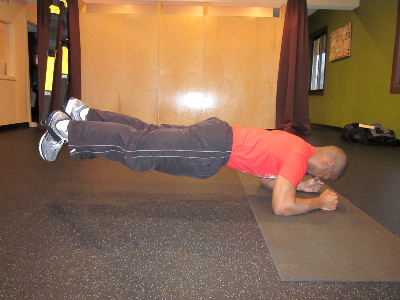
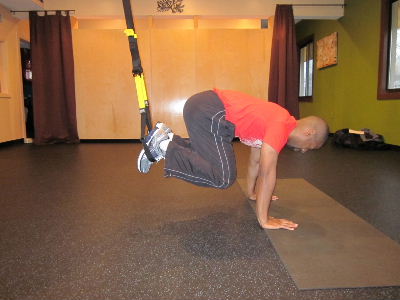
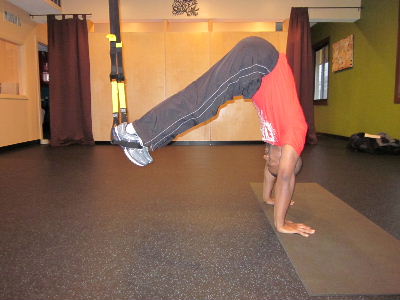
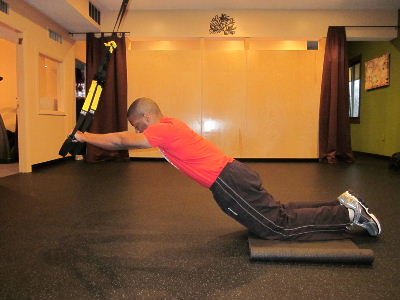
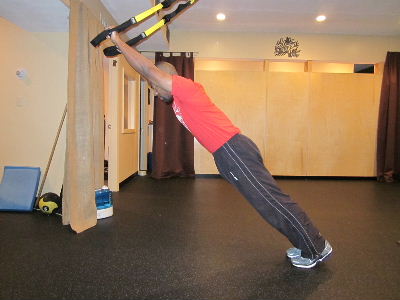
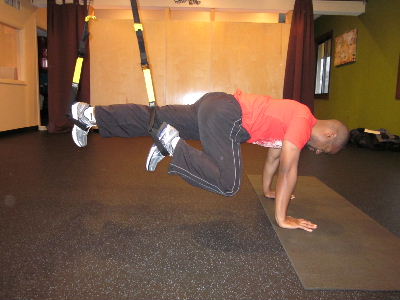
Trx Oblique Exercises
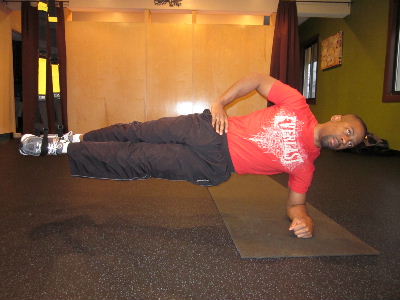
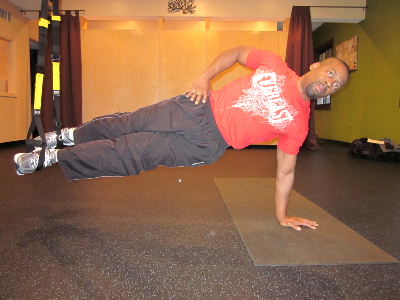
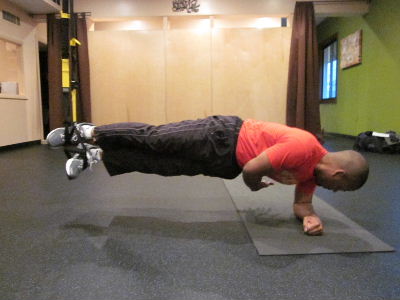
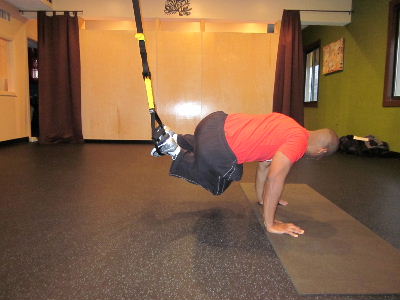
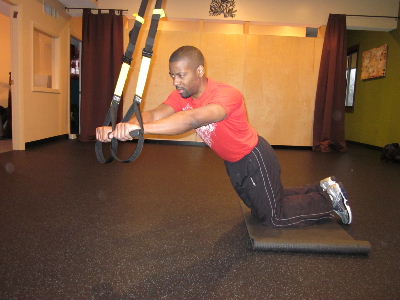
Lower Back Exercises
Lower back exercises are just as important as ab exercises, and your core includes both abdominal muscles and lower back muscles.
In a quest for a six pack and flat stomach many people focus almost exclusively on working their stomach muscles, but it is really important to also work on your lower back muscles.
Having strong back muscles complements strong stomach muscles, improves posture, protects the joints of the lower back, prevents back injury, increases speed, and improves sports performance.
If you truly want to have a strong core, you must also perform lower back strengthening exercises.
Read below about how the lower back muscles support posture, prevent injury, and improve sports performance or view the picture directory of all the lower back strengthening exerciseson this site.
Lower Back Exercises Complement Ab Exercises
I’m sure you’ve heard the phrase… “A chain is only as strong as its weakest link.” And this is also true when it comes to your body. Your body is a chain and every part works together in a synergistic way.
In order to move efficiently, your abs and back must work together.
Your back muscles pull your spine backwards (into extension), and your stomach muscles pull your spine forwards (into flexion). And, both the back and stomach muscles work together to twist (rotate) the spine and bend the spine to the side (side bending).
If your lower back muscles are weak, it will be harder to get the most out of your abdominal workout because the exercises that challenge your abdominal muscles the most also place the most pressure on your lower back.
A weak lower back can limit your ability to strengthen your abs.
So don’t neglect your lower back.
Lower Back Exercises and Posture
Exercises to strengthen the back are important to maintain good posture.
If you look at a fetus, you’ll notice that the spine is curved like the letter “C”. When we develop as children, our spine changes shape. An additional backwards curve in our neck develops after 5 months or so, when we first start lifting our “big ole” heads. Then, an additional curve develops in our lower back when we start standing on our own.
As soon as we start standing up on our own, gravity starts going to work on our posture.Gravity pulls our heads forward and causes our spines to return to the shape they were when we were just fetuses “C”. If you’ve noticed, the hump back posture in some older adults, then you’ve seen what gravity can do to your posture.
Some of the back muscles are called the erector spinae group—this simply means that their job is to keep the spine erect. The erector spinae group helps to keep the spine straight and helps to maintain good posture by holding the head in the correct position and keeping the mid back and lower back in good alignment.
When the back muscles are weak, the spine has a tendency to collapse forward. So, having strong back muscles helps to maintain good posture by keeping the spine in alignment.
Lower Back Exercises and Back Injury Prevention
Let me say, that the spine is very complex and this is just a quick discussion of back injury prevention.
Having strong back muscles doesn’t mean you’ll never have lower back pain, but exercising your back can help to keep your spine healthy. In addition, studies on chronic lower back pain have shown major atrophy (wasting away) of the lower back muscles—simply people with chronic lower back pain have small and weak lower back muscles.
So, my advice is to do some lower back strengthening exercises.
Having strong lower back muscles helps to prevent injury in a variety of ways.
When your lower back muscles are strong, they help to maintain good posture and take pressure off your joints. Spinal instability occurs when the ligaments are stretched, the cartilage wears away, and/ or the muscles are not strong enough to keep the spine in the correct position.
When your lower back muscles are strong, they help to maintain good posture and take pressure off your joints. Spinal instability occurs when the ligaments are stretched, the cartilage wears away, and/ or the muscles are not strong enough to keep the spine in the correct position.
Strengthening the back can increase spinal stability and take pressure off the joints.
Lifting and carrying heavy objects is one of the most common ways that people sustain back injuries. You may have been a victim yourself or you probably know someone who “threw out their back lifting something heavy”.
When you’re strong, you can lift heavy objects without putting excessive pressure on your body. If you exercise your back regularly, you will be able to do more things and have less chance of injury.
The abdominal muscles help to protect the back, but the back muscles are just as important for protecting the back from injury.
Lower Back Exercises and Sports Performance
If you’ve read my page on core exercises, then you understand that having a strong core is important for developing speed and power.
Both the abs and lower back help to stabilize the pelvis. When the pelvis is stable the legs can generate more power and more force. In addition, when the pelvis is stable the hips, knees, and ankles are more stable. Movement is generated from your center of gravity, and the lower back helps to stabilize your core.
If you are in a running, jumping, or throwing sport it’s important to exercise your lower back muscles on a regular basis because it can increase your speed and decrease your chance of injury.
Medicine Ball Exercises
Medicine Ball Abdominal Exercises are not just for boxers and wrestlers; they are also good abdominal exercises for the average person trying to increase ab strength and core stability.
The first time I saw a medicine ball it was in the movie Rocky. Rocky is one of my all-time favorite movies, and "Eye of the Tiger" is on my ipod.
Even though I was an athlete in high school and college, I didn't use medicine ball abdominal exercises regularly until I graduated physical therapy school and became a personal trainer. I have noticed that the medicine balls have become more popular in the gym since around 2000 and the whole "core training revolution".
In a big gym with tons of fancy exercise equipment, it's easy to forget how effective something as simple as a medicine ball can be at improving your abdominals, core strength, and athletic ability.
Medicine balls, which are simply weighted balls, come in many varieties and sizes. Some are filled with sand or another filler, and some are solid rubber. Generally, a beginner and/or someone with small hands will use a ball that is 2-6 pounds, and someone who has decent abdominal strength and big hands will use a ball that's between 6 and 12 pounds.
I often teach my clients medicine ball exercises, and here are a few of my favorites.
Medicine Ball Abdominal Exercises:
Russian Twist (V-sit with a twist)
Starting Position: Begin sitting on the floor with your knees bent and your feet flat on the floor. Hold the medicine ball and extend your arms out in front of you, and recline back so that your body is angled about 45 degrees.
Form: Keeping your lower body still, twist your body to the right and then to the left.
Personal Trainer Tips: The more you lean back, the more challenging this exercise becomes.
Use an angle that is comfortable, yet still gives your abdominal muscles a challenge.
Use an angle that is comfortable, yet still gives your abdominal muscles a challenge.
To make this exercise more challenging you can lift your feet about 1-2 inches off the floor and keep you feet in the air during the entire set.
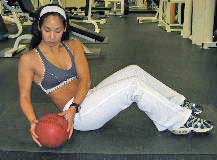
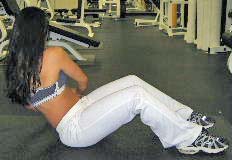
Ab Workouts
Here's a general philosophy for constructing a workout.
There are 3 major Training Techniques: Straight Sets, Super Sets, and Circuits.
Straight Sets are a technique in which you pick an ab exercise and perform 2-3 sets of that exercise before moving on to the next ab exercise.
Example: crunches, rest, crunches, rest, crunches, rest, then plank, rest, plank, rest plank, done!
And, one of my best ab workouts ever was a straight set ab workout.
The Super Set technique uses two exercises in combination. You perform the first ab exercise, and then move immediately to the second ab exercise with no rest.
After you complete the second ab exercise rest, before repeating the sequence again.
Example: crunches, plank, rest, crunches, plank, rest, crunches, plank, rest.
The Super Set Technique is an advanced technique and it can really increase the challenge of your core workout.
The Circuit Technique uses three or more ab exercises in a row. You would perform the first, second, and third ab exercise, and so on in a row without any rest.
After you complete all of the ab exercises in the circuit you would rest before repeating the circuit.
Example: crunches, plank, bicycle crunches, reverse crunches, oblique crunches, rest� repeat from the beginning.
The Circuit Technique is also an advanced technique, and some of the best abdominal workouts are circuits.
Core Workout on the Ball
Here's a core workout for your abdominal muscles and your lower back muscles that uses an exercise ball.
Some of my favorite ab exercises involve the stability ball.
Exercise Ball Workout for the Abs #1
Here's a challenging workout just for the abs that consists of 4 ab exercises that use an exercise ball.
Exercise Ball Workout for the Abs #2
Here's another exercise ball workout for the abs that consists of 4 ab exercises.
Exercise Ball Workout for the Abs #3
Here's another exercise ball abs workout that consists of 3 advanced abs exercises.
Oblique Exercises Abs Workouts
Here is an abs workout that uses 4 oblique exercises. You can do these on the floor with no ab exercise equipment needed.
Killer Bosu Ball Workout for the Abs
The Bosu Ball is a great piece of core exercise equipment. If you're brave enough, try thiskiller bosu ball circuit for the abdominals.
Simple Home Workout for the Stomach
If you're looking for a simple home workout for your stomach muscles, look no further. Here is a simple stomach workout that uses 3 easy stomach exercises.
Bosu Ball and Swiss Ball Workout Routine
This abdominal workout combines 2 Bosu ball ab exercises with 2 Swiss ball ab exercises. You can do the workout in straight sets, super sets, or circuit style. Try this workout.
Lower Stomach Exercise Workout
This stomach workout uses 4 exercises that emphasize the lower stomach. You can do the workout in super set or circuit fashion.
Click the link to learn this lower stomach exercises workout.
Challenging Plank Exercise Workout
Here's a challenging plank exercise workout that uses 3 exercises in circuit fashion. Try thisplank exercise workout.
Killer Ab Work out Routines
If you've been exercising regularly and want a challenge, try one of these Killer Ab Workout Routines.
Ab and Arm Toning Workout
Here is an arm toning workout that pairs arm exercises with ab exercises. This workout can be used by women and men.
3 Bosu Ball Workouts
This page has 4 of the best abdominal exercises on the Bosu Ball and shows you how to do a straight set, super set, and circuit workout.
Here are 3 free ab workout routines using the Bosu Ball.
Great Core Workout Video
Here's a great core workout from Ford Fitness Model Kim Strother. It uses 3 core exercises on the physioball and 1 total body core exercise with the medicine ball.
Easy Oblique Workout #1
Here's an easy oblique workout that you can do at home with no equipment.
Easy Oblique Workout #2
Here's another easy stomach workout for the obliques that you can do at home with no equipment.
How to Achieve your New Years Goals
At the beginning of the year, many people make New Year Resolutions, but so few people actually have success sticking to their resolutions.
I have a different approach to achieving health and fitness goals in a New Year, and I think it can help you to stick with your resolutions.
The Big Problem with New Year Resolutions
When people set resolutions, the resolutions are often all or none and this makes them difficult to achieve. This is the big problem with resolutions.
Most people set resolutions to stop a certain behavior (forever) or start a certain behavior (forever). Trying to change our habits or behavior all at once and permanently is virtually impossible. So, it's easy to understand why people get frustrated and de-motivated before January is over.
Instead of setting typical resolutions that are all or none, my strategy involves setting health goals for the entire year.
Goal Setting For the New Year
Here's my strategy for achieving your New Year Resolutions...
Give yourself 12 Months to Achieve Your Goal!
That's right, give yourself 12 months to achieve your goal. I know it sounds simple but let me explain how powerful this can be.
At the beginning of each year, I sit down and write out about 20 things that I want to accomplish during the year.
Here are some sample goals from last year.
1. Read 10 fitness and health related books.
2. Get a physical.
3. Finish the year weighing less than 170 pounds. etc...
1. Read 10 fitness and health related books.
2. Get a physical.
3. Finish the year weighing less than 170 pounds. etc...
When I set my health goals, I give myself until January of the next year to accomplish them. Goals are so much more powerful than resolutions.
Weight Loss New Year Resolutions
If you want to lose weight in the New Year, pick a goal weight for the end of the year. So many people start of the New Year saying they want to lose 20 pounds, and they actually lose 20 pounds, but unfortunately gain it back.
If you set a goal weight for the end of the year, then there is an emphasis on maintaining your weight loss and beginning the following year ahead of where you were the previous year.
We all have weight fluctuations for different reasons. Life is seldom linear, and we usually don't make progress in a straight line. So, if you gain a little weight during the summer, don't worry about it too much, you still have 5-6 months to achieve your goal.
By the same token, if you don't lose weight as fast as you wanted in the first few months of the year, don't stress too much, you still have the rest of the year to achieve your goal.
Giving yourself 12 months to achieve a health, fitness, or weight loss goal, takes some of the pressure off from trying to achieve everything the first week of January.
How to Set Goals and Achieve New Year Resolutions
Goal setting is important for achieving success in any area of your life, and if you begin to set and achieve small health and fitness goals, you will find it easier to set and achieve larger fitness goals.
For many people they so rarely set goals that they are not sure how to go about it. Here are some tips on setting goals.
Goal Setting Tips for the New Year Resolutions
Set S.M.A.R.T. Goals...
Specific
Measurable
Attainable
Relevant
Time Bound
Specific
Measurable
Attainable
Relevant
Time Bound
Specific: Your goals must be specific. If you can clearly define what you want in specific terms it is much easier to achieve it.
You could have a goal to lose weight, but this is not specific enough. Technically, when you go to the bathroom or sweat you lose weight, but that's not what most people are thinking when they say they want to lose weight.
So be as specific as possible when setting goals, put a number with your goals if that makes them more specific.
Measurable: You must be able to measure a goal to make it affective as a motivator towards progress. Setting a goal to feel better or get in better shape is not measurable, so there is no way to know when you've achieved the goal.
Instead of setting a goal simply to get in better shape, set a measurable goal such as, "I run 1 mile without stopping in less than 10 minutes by December 2009" or "I perform 20 push ups in a row by March 20009". These are measurable goals for getting in better shape, and being able to measure progress is a great motivator.
Attainable: This is a tricky element in goal setting. If you are setting out to do something you have never achieved before, then it is hard to truly know if it's attainable.
If a goal is outrageous, it loses its motivational power. A general thought is that short-term goals should be 10-25% of the long term goal. Do your best to set a goal that you believe you can achieve, and then challenge yourself a little by adding 5-10% to that goal.
Relevant: This is also a tricky element of goal setting. By relevant, your goals must be relevant to your overall family, work, and personal situation. Your goals must also be relevant to your values and beliefs.
Let's say that you have a friend that has achieved a certain goal, it may be hard for you to achieve the same goal if it's not as relevant to your personal situation. Your goals must be intensely personal and relevant to your life.
Time Bound: Having a deadline is an important part of motivation. We all know the feeling of urgency when we have a major project to complete and little time to do it. Without a deadline, there is no sense of urgency, and urgency propels us to achieve higher degrees of success.Having a time frame for the completion of goal is often a neglected part of New Year Resolutions, and as I mentioned earlier I think you should give yourself 12 months to achieve many goals or new behaviors.
So, think about the above criteria when you're making New Year Resolutions (or setting goals at any other time for that matter).
More Goal Setting Tips for New Year Resolutions: The 3 P's
In addition to setting S.M.A.R.T. goals, you should write affirmative statements that arePresent Tense, Positive, and Personal. These are the 3 P's.
Affirmations are statements that help to program your mind for success. Affirmations help to keep you motivated, and affirmations help to change your habits by changing how you think about things. Affirmations should use the 3 P's.
Present Tense: You can only live now, and your subconscious mind can only process commands and goals in the present tense. If you use Future Tense language, you are building in procrastination into your subconscious mind.
For example, it you write the affirmation "I will lose weight", that creates less motivation because the subconscious mind has no urgency for things in the future. It is easier to achieve goals set in the present tense.
Positive: Your subconscious mind better understands statements written in positive language. For example, "I eat healthy foods as my primary source of calories" is positive, and "I do not eat junk food" is written with the negative word "not".
In the first the emphasis is on healthy foods, and in the second example the focus is on junk food. When possible, use positive language to shape your goals and affirmations.
Personal: This is a simple step. Begin each goal, statement, or affirmation with the pronoun "I". Using "I" makes the goal personal. Your goals must be intensely personal.
Here are some examples of affirmation statements using the 3 P Formula.
I weigh less than 170 pounds.
I eat healthy foods.
I read 30 minutes a day.
I exercise 3 times a week.
I weigh less than 170 pounds.
I eat healthy foods.
I read 30 minutes a day.
I exercise 3 times a week.
Affirmations can really help to change your mindset from doubt to belief. After you make New Year Resolutions or set goals for the New Year, you must keep reinforcing to yourself that you can do it.
Sticking With New Year Resolutions
In order to stick with New Year Resolutions, you must change your habits. Habits rule our lives. Focus on changing your habits and then the goals automatically follow.
If you are truly, looking for a permanent change, then you must change permanently. I know this is daunting, but it's the only way to achieve lasting results.
If there are things that you are not ready to change, then don't fight against yourself. Instead, pick things that you have a strong desire to improve; desire is another strong component of motivation and achieving success.
Pick things you have a strong desire for, set SMART Goals, write affirmations that complement your goals, and give yourself 12 months to achieve the goals.
If you follow the above strategy, you'll be more likely to look back at the end of the year with pride about what you've accomplished.
How Yoga can Wreck your Body
On a cold Saturday in early 2009, Glenn Black, a yoga teacher of nearly four decades, whose devoted clientele includes a number of celebrities and prominent gurus, was giving a master class at Sankalpah Yoga in Manhattan. Black is, in many ways, a classic yogi: he studied in Pune, India, at the institute founded by the legendary B. K. S. Iyengar, and spent years in solitude and meditation. He now lives in Rhinebeck, N.Y., and often teaches at the nearby Omega Institute, a New Age emporium spread over nearly 200 acres of woods and gardens. He is known for his rigor and his down-to-earth style. But this was not why I sought him out: Black, I’d been told, was the person to speak with if you wanted to know not about the virtues of yoga but rather about the damage it could do. Many of his regular clients came to him for bodywork or rehabilitation following yoga injuries. This was the situation I found myself in. In my 30s, I had somehow managed to rupture a disk in my lower back and found I could prevent bouts of pain with a selection of yoga postures and abdominal exercises. Then, in 2007, while doing the extended-side-angle pose, a posture hailed as a cure for many diseases, my back gave way. With it went my belief, naïve in retrospect, that yoga was a source only of healing and never harm.
Monday, January 27, 2014
Two Forms of Stiff-Leg Deadlifts
Conventional deadlifts are a total body movement, primarily working your back. The stiff-leg deadlift movement is at your hip joint, focusing all your strength in your hamstrings and glutes. You can incorporate one of these forms of stiff-leg deadlifts into your hamstring day, then switch the following week to the opposite exercise. Make sure you perform your workout with correct form to get the desired results and improve your physique.
Straight-bar Stiff-leg Deadlifts
 7 sets/20 reps (30-45 second rest period between sets)
7 sets/20 reps (30-45 second rest period between sets)• Keep feet flat
• Drive through heels
• Keep back straight
• Pivot only at hip joint
• Slight bend in knees
• Squeeze glutes and stand up
• As you lower bar, keep it close to legs, stopping slightly below knees, then squeeze back up
• Keep constant tension in glutes
Single-leg Romanian Deadlift
7 sets/20 reps (30-45 seconds in between sets)
• Stand with one foot flat on the floor and one foot hovering slightly above floor entire set right next to planted foot
• Holding dumbbell in hand, perform deadlift pivoting only at hip joint
• Slight bend in knee
• Keep back straight and abs tight
• Lower dumbbell just below knee, keeping glutes tight entire set
• Stand up pulling hips forward, keeping tension in glutes
• Complete entire reps with one leg then switch legs
• Stand with one foot flat on the floor and one foot hovering slightly above floor entire set right next to planted foot
• Holding dumbbell in hand, perform deadlift pivoting only at hip joint
• Slight bend in knee
• Keep back straight and abs tight
• Lower dumbbell just below knee, keeping glutes tight entire set
• Stand up pulling hips forward, keeping tension in glutes
• Complete entire reps with one leg then switch legs
Tips to Stuck up your Freezer Healthier

Fresh and frozen are two words that normally aren’t put together when it comes to classifying food. Most look down the frozen aisleand see a sea of processed foods. However this winter, look to the frozen aisle for some of those out-of-season fruits and vegetables. Forget the bad rap or the cardboard boxes of your youth filled with cooked spinach. Those days are over and today the frozen aisle can offer many benefits when fresh fruits and vegetables are out of season.
Here are few key tips to stocking up your freezer this winter:
Picked at Peak. Unlike many of the fruits and vegetables in the produce section that are picked well before ripe then shipped to market, frozen fruits and vegetables are picked at their peak. Doing this also ensures that the fruits and vegetables are full of the maximum amount of vitamins, minerals and antioxidants. Freezing them keeps them at his peak level until thawed again.
What You See is What You Get. Often the fresh produce is injected with additives to preserve the food while shipping, or gassed to help hold the freshness during transport. Frozen fruits and vegetables are most of the time still in their pure state with nothing added. Be sure to check the label before buying frozen to ensure the only thing in your frozen blueberries is blueberries— some frozen fruit and veggies have additives or sugar. Some of my favorite brands are Stahlbush (comes from sustainable farming practices), Cascadian Farms (organic fruits) and Woodstock Farms.
Nutrients. Frozen food is often as nutritious or more nutritious than its fresh counterparts (depending on transit distances). Frozen foods lock in those nutrients and keep them in the plant until you are ready to consume them, whereas fresh fruit and vegetables can lose nutrients as they sit in the refrigerator.
Quick & Easy. The major benefit of frozen fruits and vegetables is they are easy. Most of the time they are already cut, peeled and ready for you to cook with. You can easily make a stir-fry or smoothie in minutes. You can warm up a little quinoa and have some frozen blueberries on it, giving the dish a fresh light flavor even as it blizzards outside.
Make Your Own Frozen Fruit. If you are good at planning ahead, the best time to prep for the winter is in the summer and fall— especially if you like berries! Many growers have pick-your-own days in the summer and fall and allow for you to pick a lot of berries at a low cost. After a picking day, clean the fruit, cut it up and place it on cookie sheets in the freezer. Once the fruit is frozen, put it in freezer bags and stock up on the freshest frozen fruit around. This takes a lot more prep but is satisfying in the winter when you pull out some frozen strawberries still bursting with as much flavor as if they were picked off that morning.
That’s the dirt this week to keep you happy and healthy this winter season. Look next week for our article how to make quinoa part of your breakfast meal plan and start your day with a punch of protein!
Tips for Making Healthy Food Choices
Dining in a restaurant is a great way to socialize and catch up with friends. Whether you go out to eat once a month or once a week, it is possible to eat healthy and make good choices. Follow these quick tips and tricks to eating guilt-free while out to eat!
• Do not skip meals throughout the day in attempt to “save up” your calories. This will likely cause you to over-eat.
• Drink a few glasses of water before your meal.
• Opt out of the complimentary bread basket. It may be free, but the less temptation the better!
• Choose grilled over fried.
• You could try ordering from the kid’s menu— these meals will besmaller portions.
• Eat the veggies first. If you fill up on the healthy stuff, you will eat less of the more calorie-dense food.
• Ask for a to-go box upon receiving your food and take the extra food out to the car immediately. Out of sight out of • Split your meal with someone.• Choose whole-wheat over white.• Ask for no butter or oil.
• BYOD (Bring Your Own Dressing). I like to bring my Walden Farms dressing— it’s calorie free! You can also bring your favorite lower calorie dressing and condiments.
• A rule of thumb for meat portions— the size of the palm of your hand will generally be a sufficient amount of protein. Anything more than that, put in your to-go box.
• If you usually drink something sweet during your meal, you could bring your own MIO or Crystal Light packet to sweeten your water. Another option would be to order unsweetened tea and add Splenda or stevia that you brought.
• If you are going to have an alcoholic beverage, try drinks such as:
Cherry or vanilla vodka and diet coke
Vodka and soda water with a squirt of MIO
Glass of red wine (though it is high in antioxidants, it isn’t very low-calorie— so be sure to limit yourself to one glass).
• Skip the condiments and high-calorie toppings— you can do without mayo, sour cream, guacamole and cheese. Stick with salsa, hot sauce, vinegar and plenty of veggies.
• Bring a stick of gum for after your meal— this will greatly reduce any additional cravings you may have and the minty taste will leave you feeling satisfied.
• Pass on the dessert menu!
• Drink a few glasses of water before your meal.
• Opt out of the complimentary bread basket. It may be free, but the less temptation the better!
• Choose grilled over fried.
• You could try ordering from the kid’s menu— these meals will besmaller portions.
• Eat the veggies first. If you fill up on the healthy stuff, you will eat less of the more calorie-dense food.
• Ask for a to-go box upon receiving your food and take the extra food out to the car immediately. Out of sight out of • Split your meal with someone.• Choose whole-wheat over white.• Ask for no butter or oil.
• BYOD (Bring Your Own Dressing). I like to bring my Walden Farms dressing— it’s calorie free! You can also bring your favorite lower calorie dressing and condiments.
• A rule of thumb for meat portions— the size of the palm of your hand will generally be a sufficient amount of protein. Anything more than that, put in your to-go box.
• If you usually drink something sweet during your meal, you could bring your own MIO or Crystal Light packet to sweeten your water. Another option would be to order unsweetened tea and add Splenda or stevia that you brought.
• If you are going to have an alcoholic beverage, try drinks such as:
Cherry or vanilla vodka and diet coke
Vodka and soda water with a squirt of MIO
Glass of red wine (though it is high in antioxidants, it isn’t very low-calorie— so be sure to limit yourself to one glass).
• Skip the condiments and high-calorie toppings— you can do without mayo, sour cream, guacamole and cheese. Stick with salsa, hot sauce, vinegar and plenty of veggies.
• Bring a stick of gum for after your meal— this will greatly reduce any additional cravings you may have and the minty taste will leave you feeling satisfied.
• Pass on the dessert menu!
Subscribe to:
Posts (Atom)



